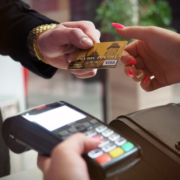Credit Report – Understood
What to look for on your Credit Report?
While reviewing a Credit Report, a lot of the information could look abstract and very difficult to understand. It is quite common for consumers to either willfully or by lack of knowledge, ignore many key details on the report. Lenders use codes to send information to the credit bureaus about how and when you make payments.
These codes have two parts:
- a letter shows the type of credit you’re using
- a number shows how good your payment history is
You may see different codes on your credit report depending on how you make your payments for each account
Click Here if You Want to Build Your Credit – Get Your Dream Car Today!

Breaking down Letters on the Credit Report
The Letters Used
There are typically 4 types of credit and 4 letter codes to specify each one of them:
- Revolving or Recurring Credit (R): In this case the creditor allows you an amount of money that you can use on an ongoing basis. As a consumer, you use an amount and after you pay that amount, you can use it again. Use-Pay-Use-Pay. It revolves. There is no term. A minimum payment would be required on the due date. A good example would be a credit card or a line of credit.
- Installment Credit (I): Here, you would be granted a certain amount for a fixed period of time – along with a predetermined payment that comes from a predetermined interest rate. Once the loan is payed off, you would need to apply again to have access to that same amount again. A good example would be getting car financing or a bad credit car loan.
- Mortgage Loan (M): This is also defined as installment credit in some cases. It refers to a mortgage that the creditor is granting for the purchase of a home. In this case, terms are defined differently. You have a total amortization period, and a number of terms within that. Essentially, if you have a 5 year term & 20 year amortization – your payment is calculated for the first 5 years and renegotiated for the next 5 year period.
- Other or Open Status Credit (O): The money is borrowed when needed. An example could be telephone bills or utility bills, overdraft etc.

Photo by on Pexels
Breaking down the Numbers on the Credit Report
| 0 |
|
| 1 |
|
| 2 |
|
| 3 |
|
| 4 |
|
| 5 |
|
| 6 |
|
| 7 |
|
| 8 |
|
| 9 |
|
It is very important to understand that when a lender determines a late status, it is always in reference to your payment due date. In order for an account to be R2 or I2 the consumer must not have made a payment 31 days from the due date.
For example:
- If you have a credit card account that you paid on time, it’ll be reported as “R1”
- Should you have a line of credit, and you missed a payment by 45 days, it’ll be reported as “O2”
- If you have credit card debt and you’re being contacted by a collection agency for payment, it’ll be reported as “R9”
The best rating is 1. Any number higher than 1 will likely hurt your credit score.

Photo by on Pexels
Financial information on your credit report
Your credit report may contain the following financial information:
- non-sufficient funds payments, or bad cheques
- chequing and savings accounts closed “for cause” due to money owing or fraud committed
- credit you use, including credit cards, retail or store cards, lines of credit and loans
- bankruptcy or a court decision against you that relates to credit
- debts sent to collection agencies
- inquiries from lenders and others who have requested your credit report in the past three years
- registered items, such as a lien on a car that allows the lender to seize it if you don’t make payments
- remarks, including consumer statements, fraud alerts and identity verification alerts
Your credit report contains factual information about your credit cards and loans, such as:
- when you opened your account
- how much you owe
- Whether you made your payments on time
- if you missed payments
- Whether your debt has been transferred to a collection agency
- if you went over your credit limit
- personal information that’s available in public records, such as a bankruptcy
Click Here if You Want to Build Your Credit – Get Your Dream Car Today!










